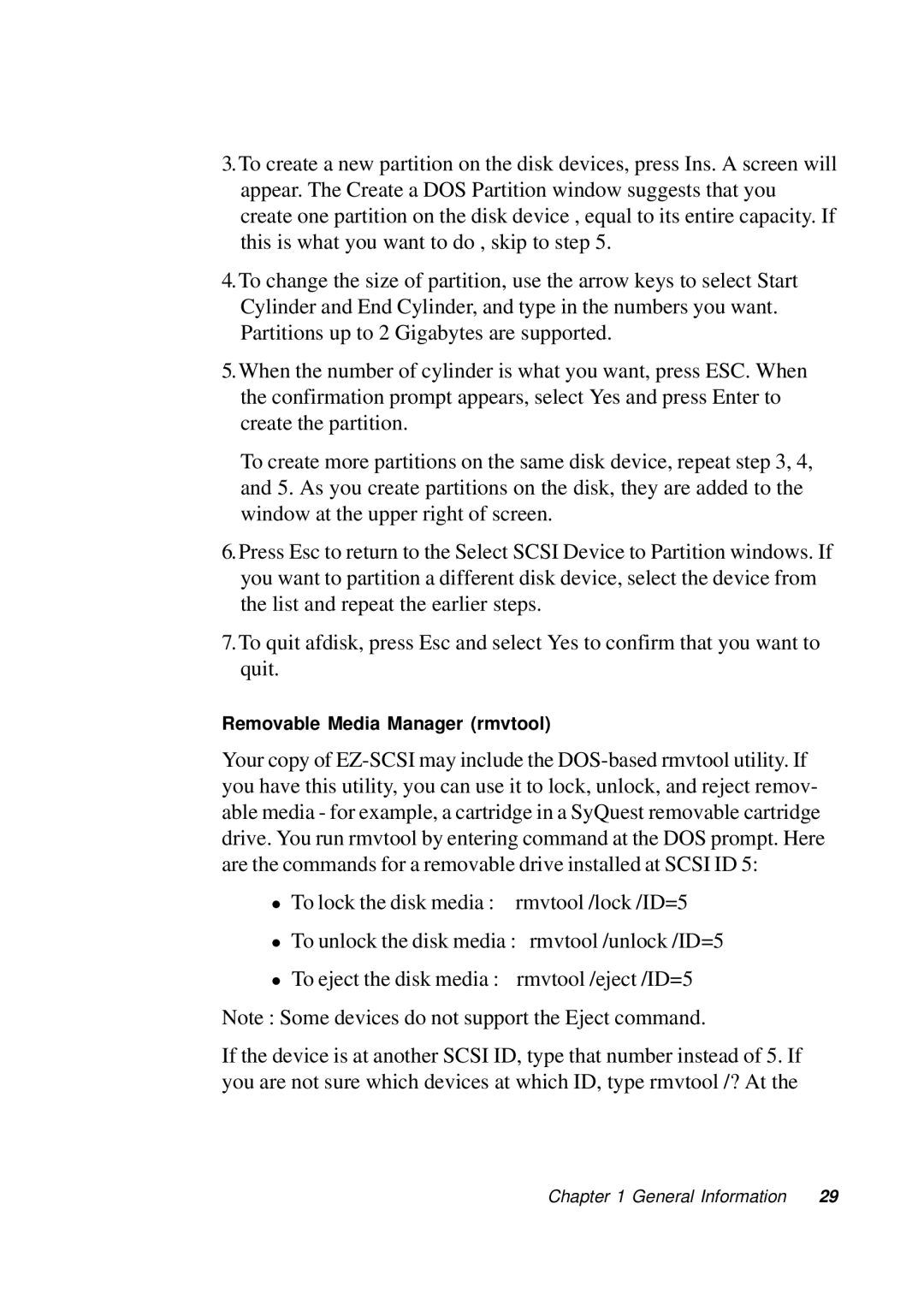3.To create a new partition on the disk devices, press Ins. A screen will appear. The Create a DOS Partition window suggests that you create one partition on the disk device , equal to its entire capacity. If this is what you want to do , skip to step 5.
4.To change the size of partition, use the arrow keys to select Start Cylinder and End Cylinder, and type in the numbers you want. Partitions up to 2 Gigabytes are supported.
5.When the number of cylinder is what you want, press ESC. When the confirmation prompt appears, select Yes and press Enter to create the partition.
To create more partitions on the same disk device, repeat step 3, 4, and 5. As you create partitions on the disk, they are added to the window at the upper right of screen.
6.Press Esc to return to the Select SCSI Device to Partition windows. If you want to partition a different disk device, select the device from the list and repeat the earlier steps.
7.To quit afdisk, press Esc and select Yes to confirm that you want to quit.
Removable Media Manager (rmvtool)
Your copy of
lTo lock the disk media : rmvtool /lock /ID=5
lTo unlock the disk media : rmvtool /unlock /ID=5
lTo eject the disk media : rmvtool /eject /ID=5
Note : Some devices do not support the Eject command.
If the device is at another SCSI ID, type that number instead of 5. If you are not sure which devices at which ID, type rmvtool /? At the
Chapter 1 General Information | 29 |
